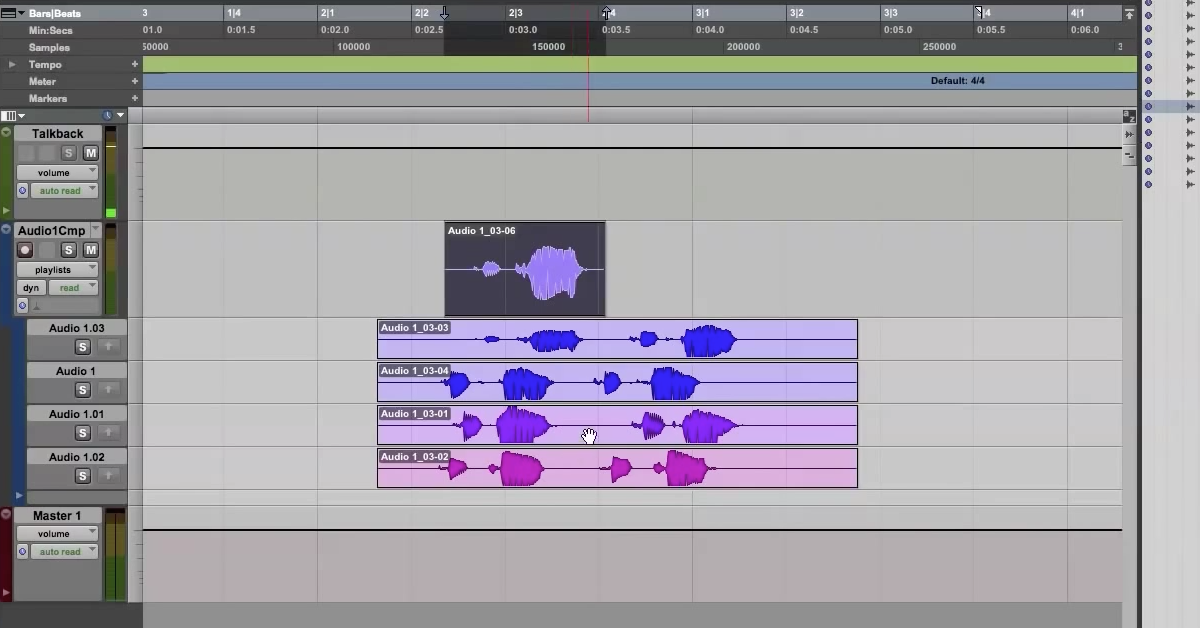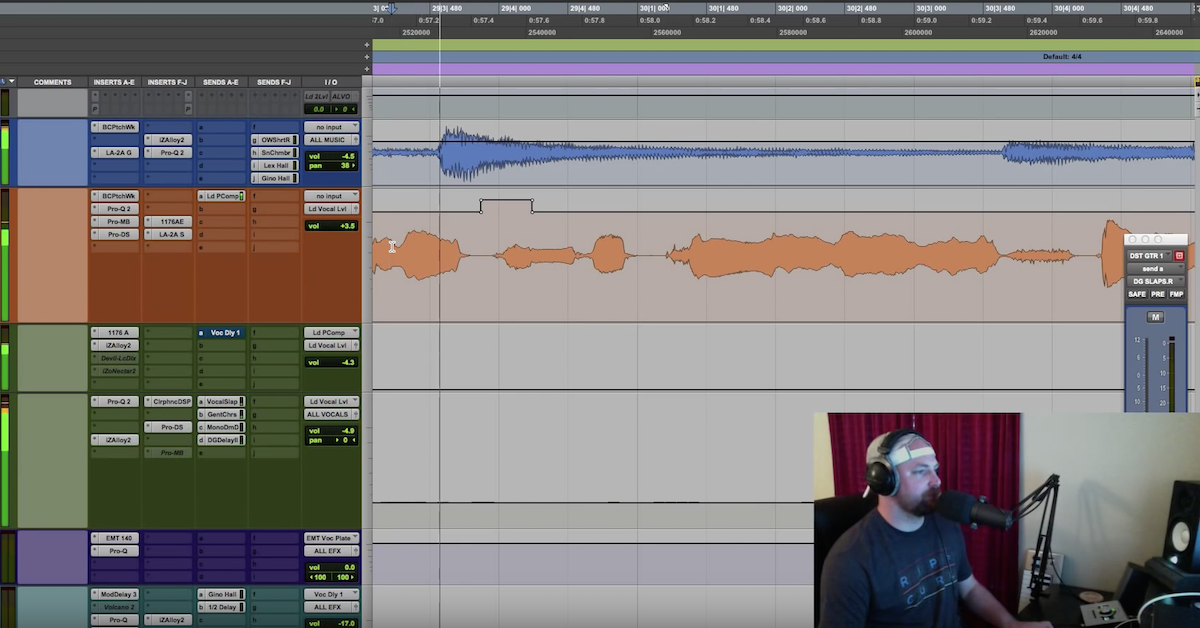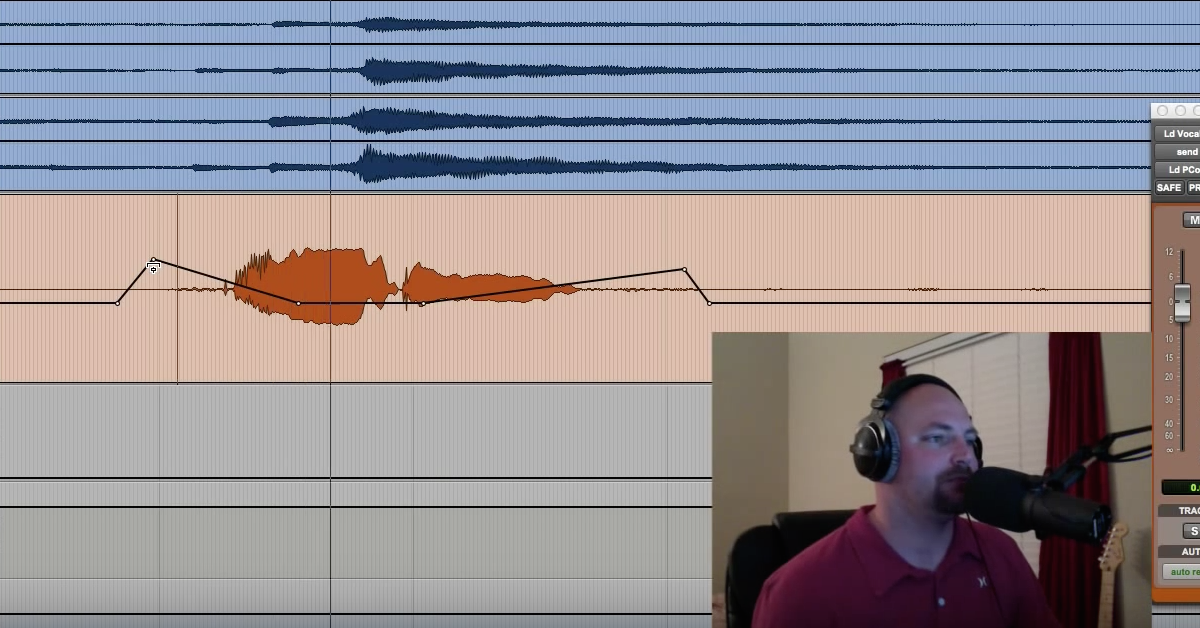5 Tips for Achieving the Best Vocal Comp
Article Content
Vocals. They’re the center of attention in most of the music we listen to and record, and have the incredible power to make or break a song.
If your vocals aren’t matching the emotional context of the track, or failing to live up to modern professional standards, it won’t matter how awesome your underlying instrumental arrangements are, as people probably aren’t going to stick around for long enough to appreciate them.
On that note, let’s look at five tips to help you edit perfect vocal comps.
1. Take Notes During Recording
When tracking a vocalist in the studio, you shouldn’t just be going through the motions, mindlessly capturing take after take in order to get through the session as quickly as possible. You should be listening intently, paying close attention to every nuance of the performance, and taking notes within your DAW whenever you hear something particularly impressive or interesting.
These notes don’t necessarily have to be long or detailed, just descriptive enough to help you quickly locate the best takes without having to wade through dozens of similar sounding, unlabeled audio clips when the time comes to edit the performance.
It’s a simple tip, but one that’s guaranteed to save you a huge amount of time and stress in the long run!
Speaking of wading through dozens of clips …
2. Don’t Record Too Many Takes
Another important thing to be aware of while tracking vocals is the number of takes you’re ending up with at the end of the session.
Although a lot of engineers will record countless variations of the same line over and over again in order to cover all bases and give themselves as much material to work with during editing, there are a few major issues that can arise from operating this way:
Singer Psychology
In my experience of comping countless songs, the first couple of takes a vocalist performs in front of a microphone are usually the best of the bunch. The primary reason for this, in my humble opinion, is that the more times you ask a singer to repeat the same section of lyrics over and over again, the more they begin to doubt the quality of their performances, and the less confident they feel to really go for it.
Of course, this can also have a lot to do with the way you go about requesting additional takes from the musicians you’re working with in the first place, and your general attitude throughout the recording session, but the bottom line is, try your best not to kill the singer’s enthusiasm by yelling “Next!” into the talkback after each take!
Vocal Fatigue
An obvious downside to spending hours upon hours recording the same singer is vocal fatigue. Even when recording someone who knows how to protect their vocal cords during long periods of non-stop singing, chances are you’re gonna have some differences in tone between the takes recorded at the beginning of the session and the takes recorded closer to the end.
Although there are certain techniques which can be used to somewhat prolong vocal cord durability, the simple truth is that you’re probably better off taking a long break and allowing the singer to fully recover once they start showing significant signs of fatigue.
Option Paralysis
Recording a million takes of the song may seem like a smart idea on the day, but when it comes time to sort through everything and pick “the take”, you’re most likely going to loathe having given yourself so many options to choose from. Besides, chances are if the singer hasn’t given you a good performance by take 10, they’re not going to magically improve by take 20!
Long story short: When it comes to tracking and comping vocals, sometimes less is more.
3. Comp Into Your Tuning
These days, it’s pretty much a given that you’re gonna be applying some form of tuning correction to your vocals in order to help them compete with the pitch-perfect popular music that’s on the radio.
This being the case, it’s often a good idea to comp your vocals into some form of Auto-Tune to begin with and give yourself a better idea of how each word is going to take to the correction later on.
Let me explain my reasoning within the context of a fairly drastic example: Trap Music.
Trap singing/rapping is often processed with the classic, hard-tuned “T-Pain Effect” as a stylistic choice. This being the case, why would you decide to comp such a performance while listening to the raw, unprocessed vocal? Wouldn’t it make a lot more sense to pick and choose each take/word based on how they’ll sound with the Auto-Tune effect applied?
This logic isn’t just applicable to trap, and can be applied to any vocal which is destined to be processed with some sort of tuning, regardless of the severity of the effect. It basically just means that you’re less likely to discard otherwise awesome takes based on the fact that their slightly flat or sharp, as they’ll probably end up sounding perfectly usable with some slight correction applied.
4. Comp to the Context of the Song
Music production is all about context. Just because something sounds good in isolation doesn’t mean it’ll work when placed within a track.
The same mentality applies when comping vocals. If you comp your vocals in solo, and select the words/takes that you’re going to use without referencing the vibe and feel of the track, you might end up with a vocal comp that is technically correct, but not quite what the song called for.
Think of it this way: If you have 10 vocal takes to choose from which are all equally in tune and on time, you could probably squeeze three subjectively “good” comps out of them. One of them might be a bit more aggressive, one of them might be a bit softer, and one of them might be somewhere in between the other two. Figuring out which of these is the “right” comp requires a musical context.
I can remember times in the past where I’ve gone through the process of constructing a vocal comp in isolation based on the tone of a particular take, only to discover that the finished performance doesn’t really match the tone of the rest of the track when played back in context.
To summarize: Do yourself a favor and make all of your decisions in context. This applies to pretty much everything in music production, and is absolutely key to creating cohesive songs.
5. Work Methodically
When comping vocals, you don’t want to be jumping between leads and background vocals, randomly skipping between different sections of the song, or trying to make everything work all at once. You want to be working in a planned, methodical manner that allows you to produce the most cohesive results in the shortest amount of time.
Here are a few things you should consider to that end:
Start with the Lead Vocal
Your lead vocal is the primary focus of the song, the guideline to which all other vocals are going to adhere. If you start by getting your lead to the point that it’s as good as can be, you can then comp and edit all of your additional vocals to match and supplement that “core” performance as best as possible.
Otherwise you’ll end up editing a backing vocal to “perfection”, going back to work on the lead and realizing something needs to change, then having to re-adjust the backing vocal to match the new lead, vice versa, back & forth … and simply put, wasting a huge amount of your valuable time!
Comp from Left-To-Right
Generally speaking, songs build dynamically and get incrementally more “impactful” as they progress from section to section.
For example: Verses are usually a bit more laid-back, pre-choruses help take things up a notch and build anticipation, while choruses tend to explode with energy and give the listener the release that they’ve been waiting for.
A good singer will listen to the surrounding instrumental during recording and adjust their delivery on a per-section basis to match the dynamic ebb and flow of the track.
As the engineer who’s editing these vocals, if you were to start from the chorus without referencing previous sections, and build a comp which wasn’t quite aggressive enough, you then run the risk of the transition between pre-chorus and chorus not being impactful enough.
The better approach is to simply follow the progression of the song from left-to-right, allowing for slight dynamic “lifts” between sections via the strategic choosing of particular takes and words.
Conclusion
Although a lot of the advice I’ve given in this article could be considered “basic”, or “common sense”, the truth is, getting this stuff right can have much more of an impact on the listener than minute technical details such as preamp choice or exact microphone distance.
This being said, don’t forget that everything starts with a great performance — you can be the most skilled vocal editor in the world, but if your vocals aren’t oozing character and emotion to begin with, no amount of after-the-fact correction is going to help them connect with your listeners on an emotional level.





